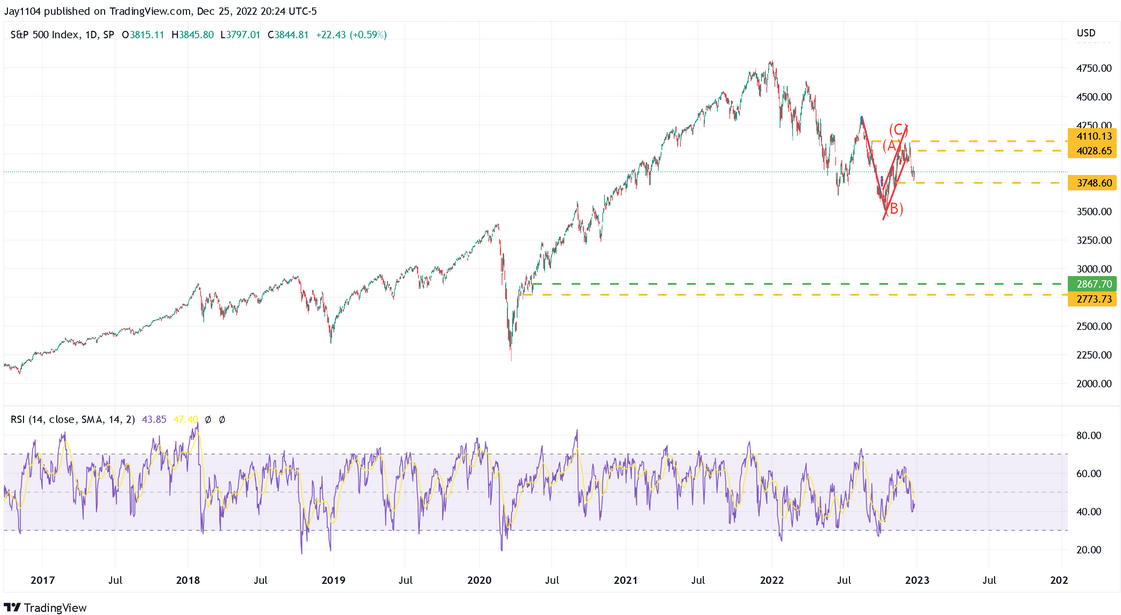In this year’s write-up, I will review my ten predictions for 2023. Anything can happen, but this exercise has a point, which helps me lay out a game plan and thought process for the path that may lie ahead this coming year. You can see how my 2022 predictions did here.
2022 was an impossible year to predict. Nearly all of the predictions I laid out at the end of 2021 proved wrong or not aggressive enough, except for the one expecting the S&P 500 to finish 2022 at around 3,800, which as of this writing, the index closed at 3,844 on Dec. 23.
2023 may be even harder to predict because the economy appears to be at a point where things could turn out to be either better than feared or worse than expected.
Inflation rates have cooled after peaking in the summer of 2022, but it is unclear how much further they will fall. Meanwhile, the bond market predicts a recession, while the GDP has been robust in the third and fourth quarters of 2022.
1. Will Inflation Plummet?
The inflation swaps market seems to think that the CPI will come crumbling down in 2023, reaching a rate of 2.5% by the middle of the year.

Many measures suggest that inflation may come down, but others indicate it is sticky and may get held up at higher levels than the market thinks. The Atlanta Fed 12 Month Sticky CPI rose to a cycle in November up to 6.6%.
That is the highest reading for the measure since 1982. It seems more likely that CPI will get stuck somewhere in that 4 to 6% range in 2023 and doesn’t come down as quickly as the market thinks.

2. A Stagflationary Environment
A sticky inflation rate in the 4 to 6% range likely means that nominal GDP growth will slow, but we aren’t seeing a recession in 2023. It is more likely to lead to a stagflationary environment, resulting in a near 0% real growth rate.
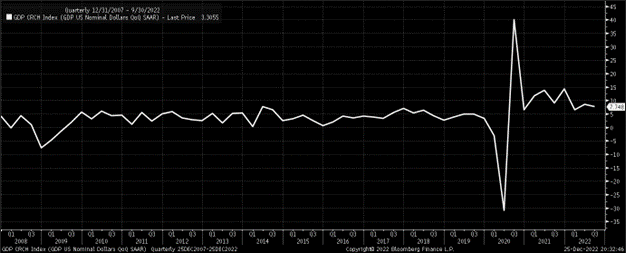
3. No Earnings Recession
Since companies generate sales and earnings in nominal terms, earnings estimates for the S&P 500 will not fall nearly as much as some are looking for.
Companies will be able to manage margins just enough to keep earnings equal to 2022 levels, meaning no earnings recession in 2023, no growth either, and around $220 in earnings for the S&P 500 versus the near 7% growth rate estimates at the end of 2022.
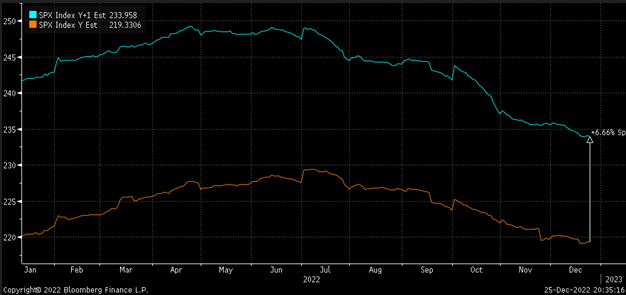
4. Key Rates to Rise Above 6%
With inflation stuck in the 4 to 6% range and the economy holding together, the Fed will be forced to raise rates above the 5.1% level indicated at the December FOMC meeting. It will most likely result in overnight climbing above 6%.
5. 2-year Yields to Shoot Up
Sticky inflation and a more aggressive Fed will lead to the United States 2-Year rate pushing even higher to around 5.25%.
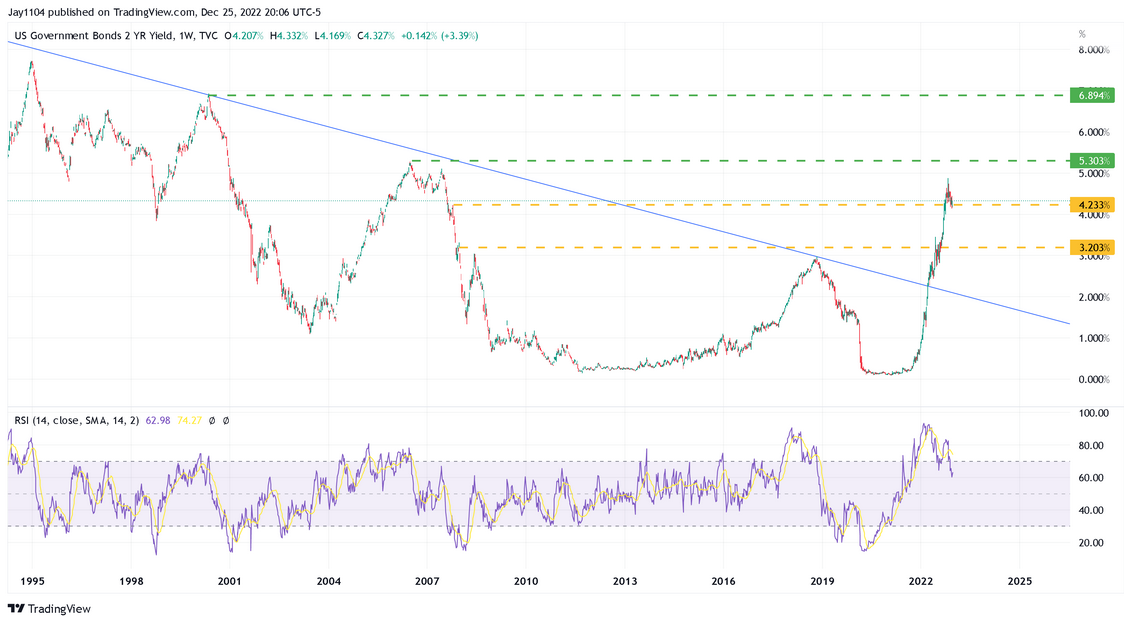
6. 2-Year Will Pull 10-Year Yields Higher
A rising US 2-year will pull the 10-Year rate higher while keeping the yield curve inverted around -50 bps. That would equate to the 10-year rate rising to around 4.75%.
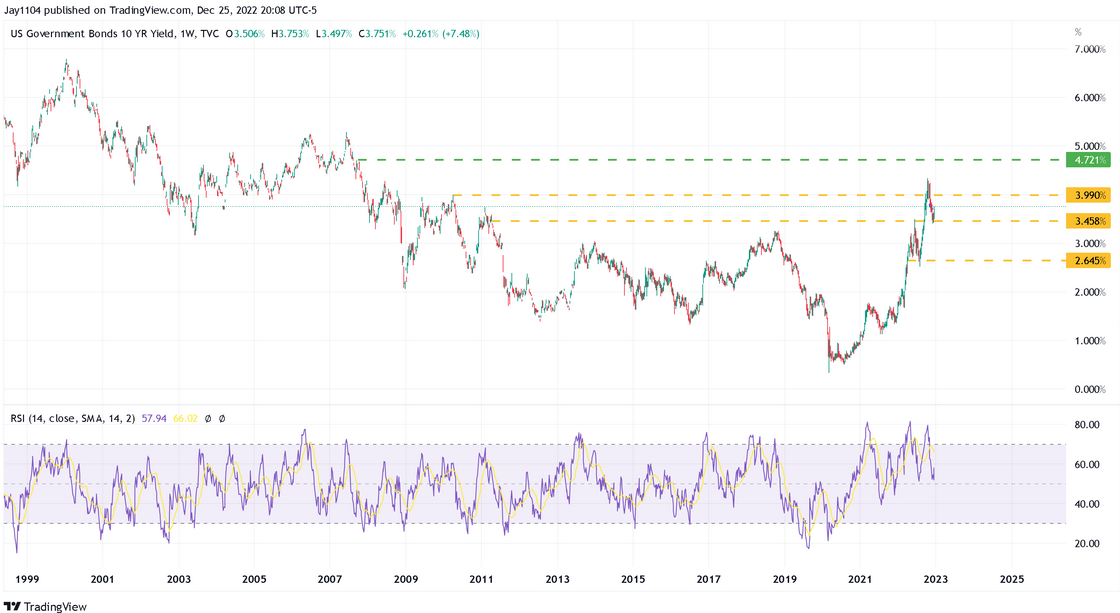
7. U.S. Dollar to Stagnate
While rates in the US are likely to head higher, rates in Europe and Japan are likely to run higher too. That will leave the dollar index in stagnation, resulting in the dollar trading between 101 and 115. 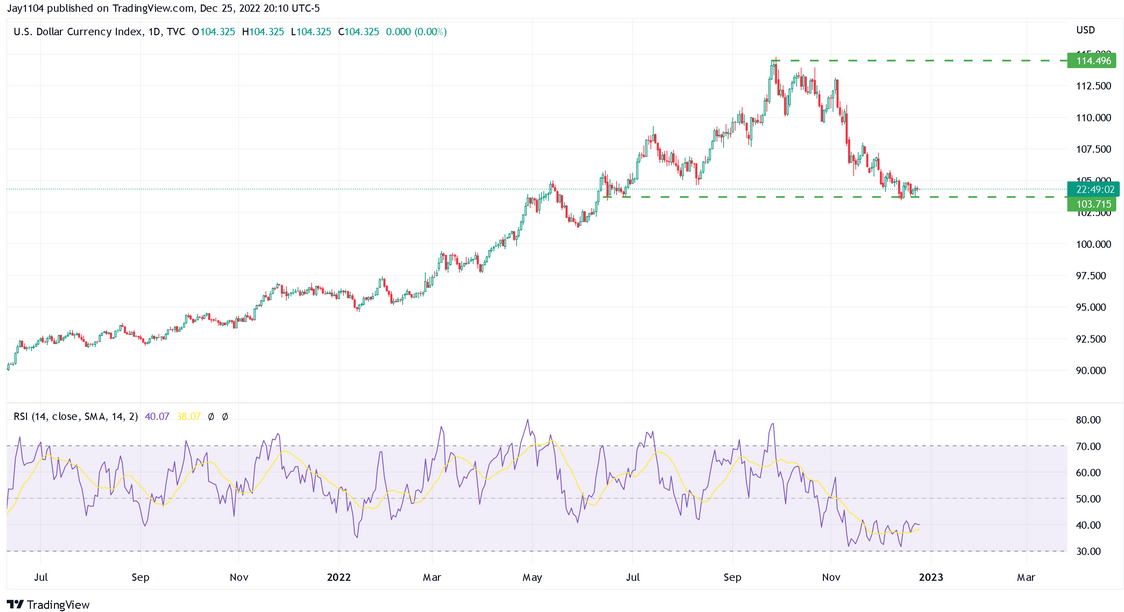
8. Bitcoin Prices to Crater
Higher interest rates and tighter financial conditions will be bad news for bitcoin, making it an undesirable asset since it creates nothing and has no intrinsic or store of value. As a result, bitcoin will fall to around 11,000 in 2023. 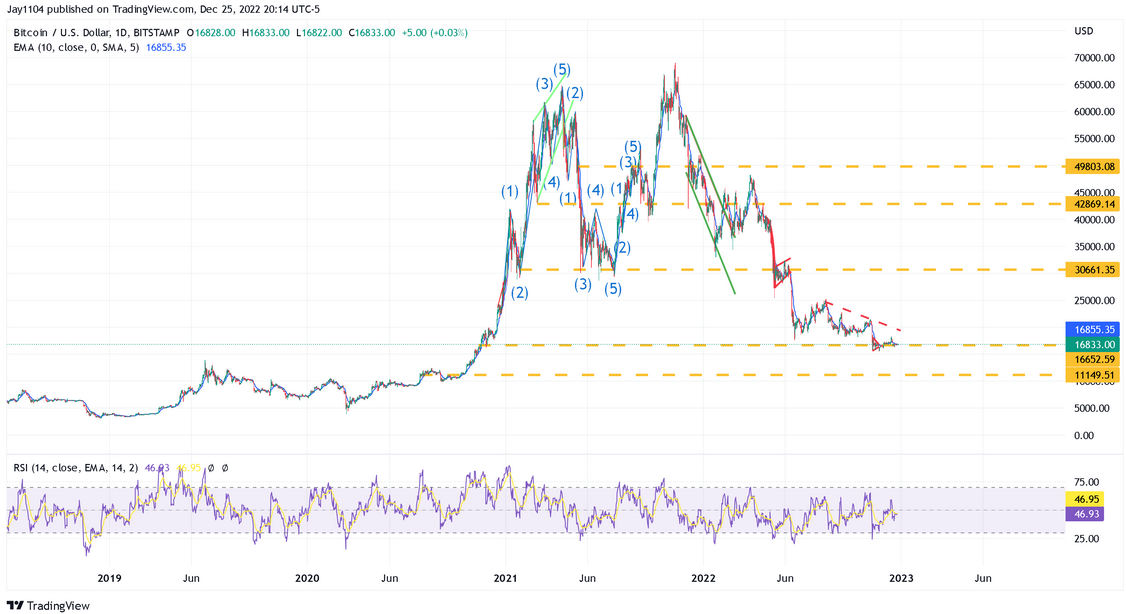
9. Value Stocks to Outperform Growth Stocks
Additionally, long-duration assets will struggle in 2023, so value stocks will probably outperform growth stocks again in 2023.
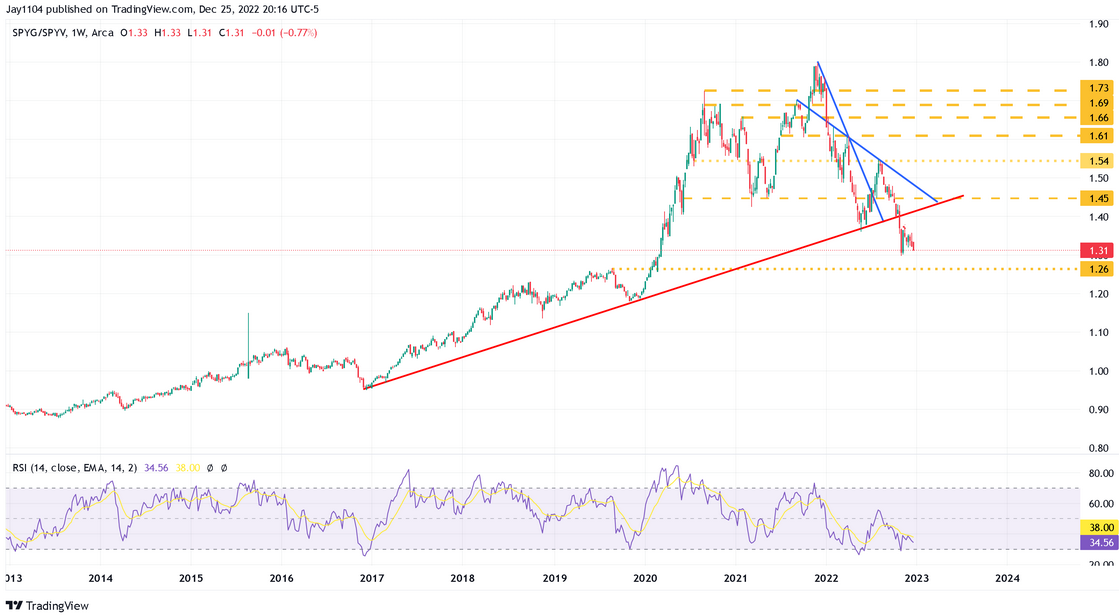
10. S&P 500 Will Have Another Negative Year
The S&P 500 will struggle in 2023, and with the Fed likely to raise rates higher than expected, inflation staying stickier, and earnings in doubt, the S&P 500 will fall again for a second straight year.
The index is likely to see a peak fear capitulation type of moment when it trades down to around 13 to 14 times earnings.
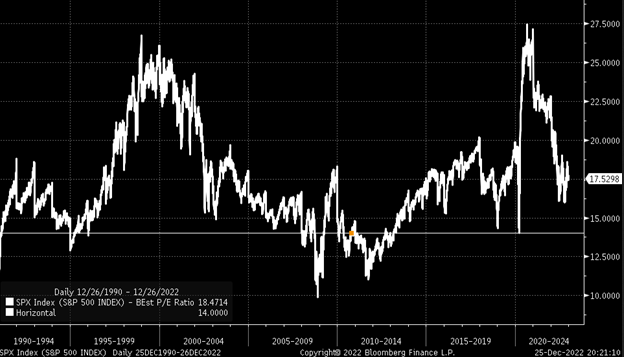
At 14 times $220 in earnings, which equals 2022, the S&P 500 is worth only 3,100, and at 13 times earnings, just 2,800.
But given how the market likes to trade to extremes, it may overshoot to the downside, trading below 3,100 and filling a gap from May 2020 at 2,867. Only to rebound and finish the year around 3,200.
